This project started as an idea for a scavenger hunt about the artifacts of entrepreneurship on Stanford University’s campus. I took this as an opportunity to introduce a variety of examples of entrepreneurship. In order to provide a well rounded perspective on entrepreneurship I made sure to include disciplines in the Humanities & Sciences. The project pivoted to a blog post format after some time. I pared down the artifacts with personal interest and discipline variety in mind. What came of this project was a personal reflection on what entrepreneurship is in different contexts on Stanford’s campus.
Google Server
Location: Jen-Hsun Huang Engineering Center (Basement)
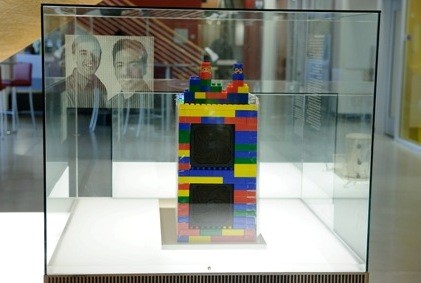
In 1996, Sergey Brin and Larry Page invented a PageRank algorithm as Ph.D. students at Stanford University. This algorithm ranked web pages that matched a search term based on the public use of that web page. This process required a lot of disk space to test on the internet. The first Google server was born (although the company itself wasn’t created until 1998).
Needless to say,Google has become a tool in our everyday lives. Personally, it’s my email, go-to search engine for things both academic and non-academic, and where I create documents I want to share. My very first reaction to seeing the server was “Oh, it’s smaller than I thought it would be.” I’d envisioned servers as huge machines. I also find the Lego exterior entertaining. The beginnings of a company that revolutionized the internet is contained within a children’s toy — this brings me joy. The Lego colors on the server are what inspired the colors on Google’s logo. It’s a pleasant reminder that every successful company starts somewhere, which is especially important on a campus where the pressure to succeed is immense.
Anaerobic Reactor
Location: Jen-Hsun Huang Engineering Center (Basement)
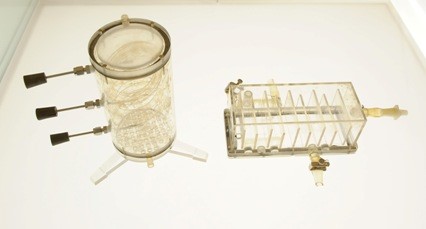
The anaerobic reactor was created out of a desire to increase efficiency. These reactors are prototypes of machines used to clean wastewater. The cylinder is an anaerobic filter developed by James Young in 1969, designed to clean organic waste from water. In the 1980s, this process was improved upon by the lab of Professor Emeritus Perry McCarty through the box shaped “baffled” reactor, which can also remove chlorinated solvents in addition to organic waste.
These objects look innocuous at first glance. I see some clear slides contained in geometric shapes, no big deal. But it is a big deal. The ability to clean and purify water is vital in today’s society because we use it for everyday activities like food production (gardening, raising animals), cooking, cleaning, and most importantly, drinking. The Earth has a limited supply of water, so reusing it is crucial. Looking at the reactors from an art perspective, I would consider them a “quiet” piece. A piece that whispers its message. They also have a toy like quality to them. I find myself wanting to interact with the three prongs on the side of the cylinder and to reorder the slats in the box. Because I am unfamiliar with the technology behind water purification, at first glance they seem little more than clear shapes After researching about them, I find that these models play an important role in innovation that has a direct effect on our lives.
HP Work Bench
Location: Jen-Hsun Huang Engineering Center (Basement)
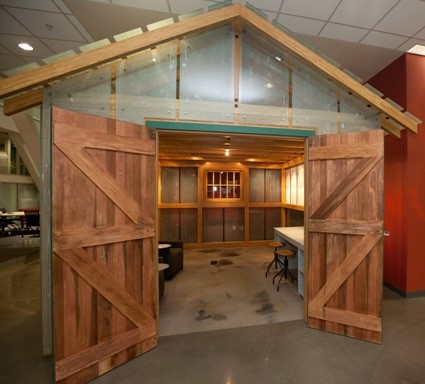
In 1939, two best friends founded a company in a garage, with little more than $500 and a drill press. These two Stanford students were William Hewlett and David Packard. A copy of their gray work bench and an old audio oscillator occupy a corner of the space inside the replica HP Garage in the Huang Engineering Center. The space also includes a big table and two white boards so it can be utilized by the many students in Huang basement.
The oscillator started as Hewlett’s master’s thesis. With a few modifications, it was later sold to the Walt Disney Company and used to test channels, recording equipment, and speaker systems in 12 theaters for the showing of the 1940 film Fantasia. Coming face to face with old technology is enjoyable to me because it’s fun to see how much the machinery can change via size, shape and functionality.
The space feels cozy. Especially in contrast to the span of open space in Huang basement. The small size and wood gives it a homey feel — I didn’t think it would feel this way in the engineering quad common spaces because I associate engineering with cold calculation and sterilized lab environments. It was refreshing!
Gates Computer Exhibit
Location: Gates Computer Science Building
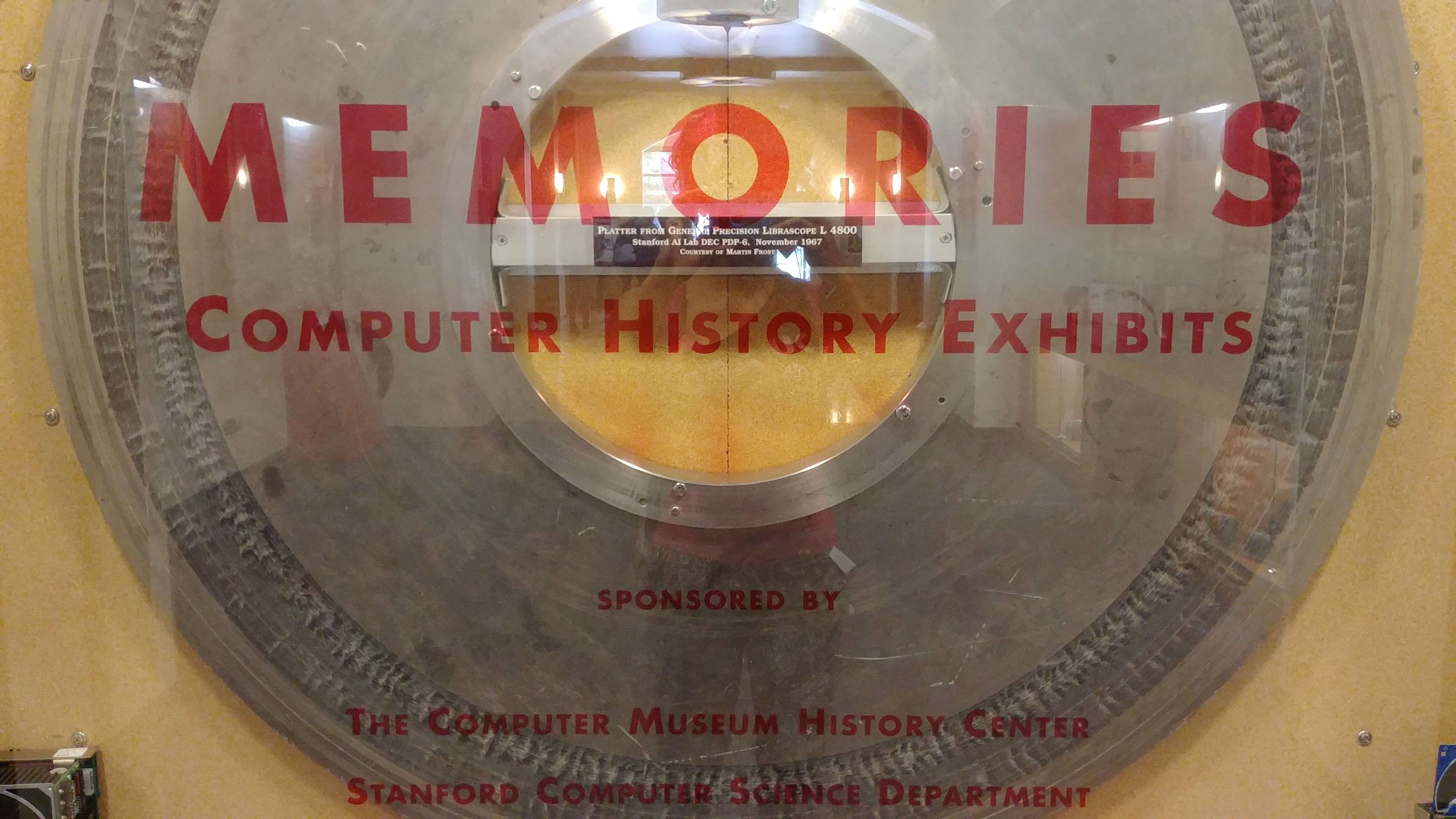
There’s a variety of technology in the exhibit, from old radio equipment to old Apple products. The exhibit talks about things like the development of a workstation (with a desktop set up) and free computer time — things we all are very familiar with today. The “free computer time” was especially interesting to me because our phones, that we carry with us everywhere, are basically mini computers, which is a recent development in terms of computer history. Imagine not having regular, reliable access to a computer and being at Stanford. It seems almost impossible. As a younger generation, we’ve adapted so fast. It makes me wonder if the exhibit were to be redone in 50 years, what would be considered “old” then. Would we see some early laptops in these cases? Early mp3 players that didn’t have a touch screen?
The Gates exhibit is interesting because it’s showcasing “old” technology. I put old in quotes because it really depends on your frame of reference. I find being able to see how large technology used to be compared to now. There are old automatic calculators bigger than our laptops. It makes me think about how far the development of technology has come. I personally like old keyboards because of how chunky the keys are, so it was nice to see many of them in one place.
Nanocharacterization
Location: Jen-Hsun Huang Engineering Center (Second Floor)
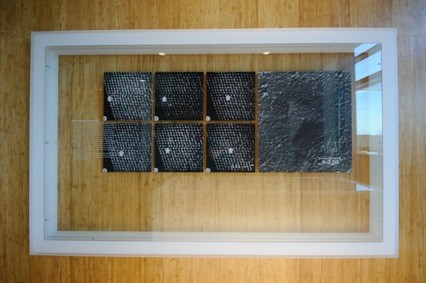
Nanocharacterization encompasses a variety of techniques for the purpose of gathering data on the material in question. There are two methods being used to produce the images here. The six panels are stills from a real-time video of atomic scale structural changes occurring in a cadmium telluride crystal. The larger panel is an image of brass after it was analyzed using a nanoindenter, which plunges a diamond tip into the material in question. The pits formed give information about how nanoprocesses can affect the materials hardness.
There is an untapped potential here in terms of creating art that incorporates science. With these images, I immediately thought of abstract art. The images could be used as is, painted over, incorporated into a sculpture, cut up, etc. As long as there is intention and concept behind the creation of the final image, art can come from anywhere. Even cadmium telluride crystals!
Collecting in Life and Death
Location: (No longer in the) Stanford University Archaeology Center
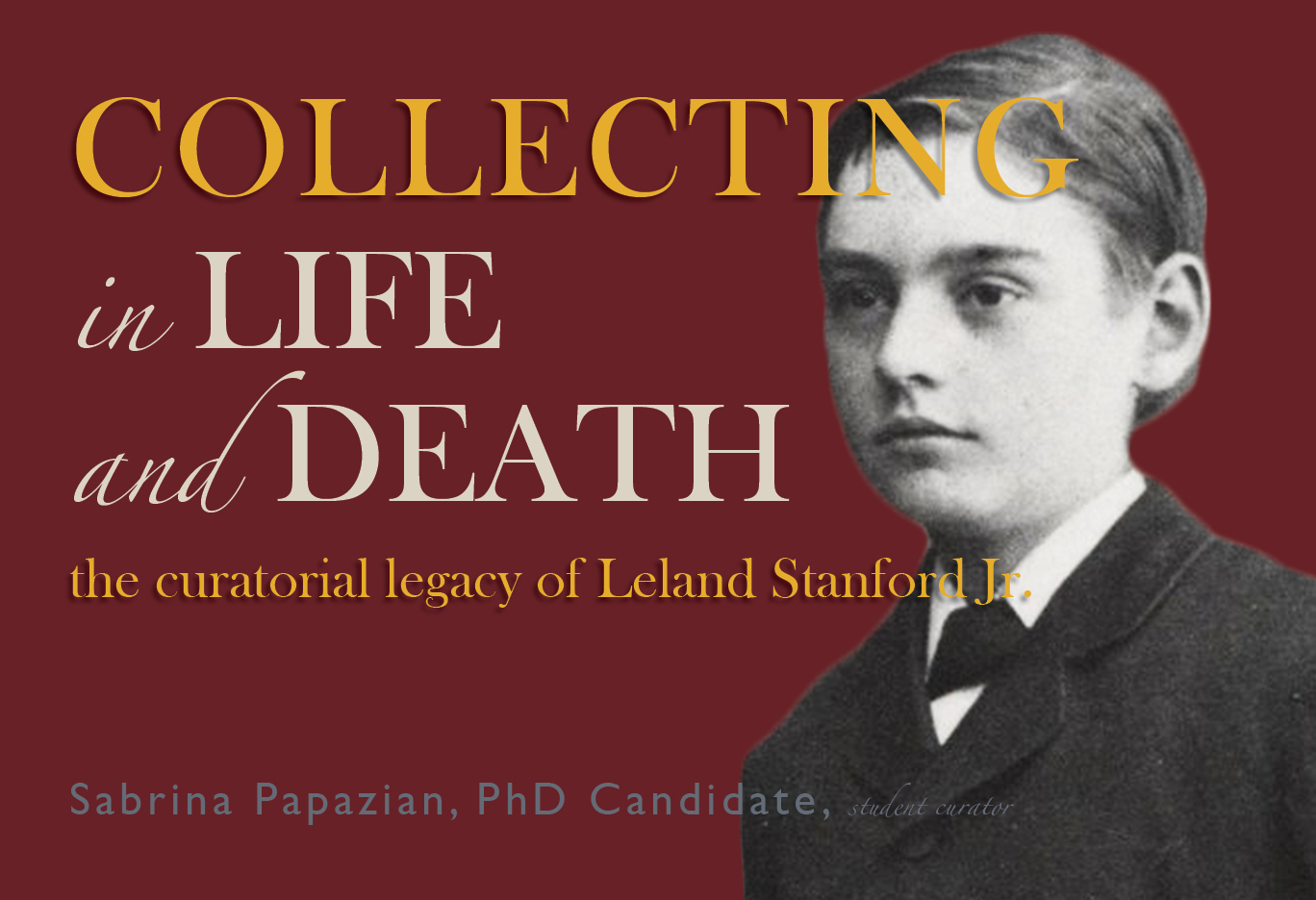
Stanford University as well as the Cantor Arts Center were created in memoriam of Leland Stanford Junior. He had a passion for collecting objects while traveling with his parents. This was such a part of Leland’s life that it’s likely the servants who worked for the Stanfords continued collecting objects in Leland’s name. If Leland did not enjoy collecting so much, we might not have the Cantor.
Entrepreneurship is often thought of as one person or a small group of people creating a business or organization because of an idea. But in this case, the ideation and the organization creation occured at different times, by different people. Leland’s passion for collecting was the idea, but it was his untimely death that lead to his parents creating a museum in his honor. There is not one singular formula for entrepreneurship, and this exhibit is a great example of that. On campus, the idea of entrepreneurship is very tech- and startup-focused. This exhibit is a clear example of entrepreneurship in the humanities. It also highlights someone’s passion, and that entrepreneurship does not have to necessarily be the “next big thing.” The Stanfords did not create the idea of a museum, but the Cantor started because Leland had a passion for collecting and honors that passion.
Facing the World
Location: (No longer in) Cecil H. Green Library
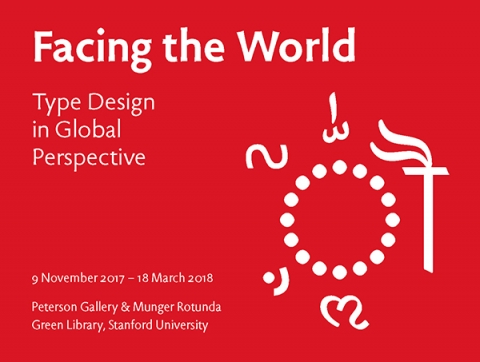
Facing the World was an exhibit once in the Green Library atrium about the advent of type design in different languages and time periods. The exhibit spoke to many disciplines including those related to art, design and technology. It demonstrated a real world combination of technology and art, which are thought to be vastly different fields. Specifically, there was a case dedicated to CS 279 (a class sponsored by both the CS and Art departments) which was about type design. The exhibit also mentioned how Stanford Computer Science Professor Donald Knuth was frustrated with the typesetting of the mathematical text in his proofs of The Art of Computer Programming Vol. 2. This led him to create TeX (1978), a typesetting program widely used in academic departments and among students, and a great example of innovation at the intersection of technology and art!
I find the international aspect of this exhibit very valuable. I enjoy learning about other countries and different perspectives and this exhibit was an opportunity to do that. I was also able to start thinking about text as not just a means of conveying a message but as an aesthetic. For me, it’s easier to think about non-Roman characters aesthetically because I don’t know what they mean, so the urge to read/ just understand the text isn’t there and I can appreciate the aesthetic value.
Hoover Exhibits
Location: Hoover Tower
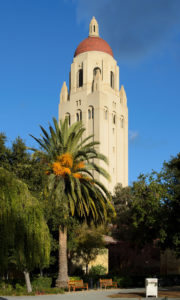
Hoover Tower is a staple landmark of Stanford University. The exhibits on the ground floor provide information about the Hoovers and serve to explain why we have a monument to them on campus. The Hoover Institution is one example of the impact the Hoovers had on Stanford University. Inspired by a president of Cornell University, Herbert Hoover started collecting WWII materials, from documents to artifacts. His passion for WWII was what founded the Hoover Institution.
What I really find interesting, though, is Mrs. Lou Hoover’s impact on campus. She created the Friends of Music at Stanford because she had a passion for music and a passion for helping Stanford. The whole thing started because she invited some of her friends to “share the expenses of a chamber music program for the summer of 1938.” It’s inspiring to think that she created an organization simply by hanging out with her friends. Inspiration is everywhere; having an open mind to where ideas can come from is important.
Product Realization Lab
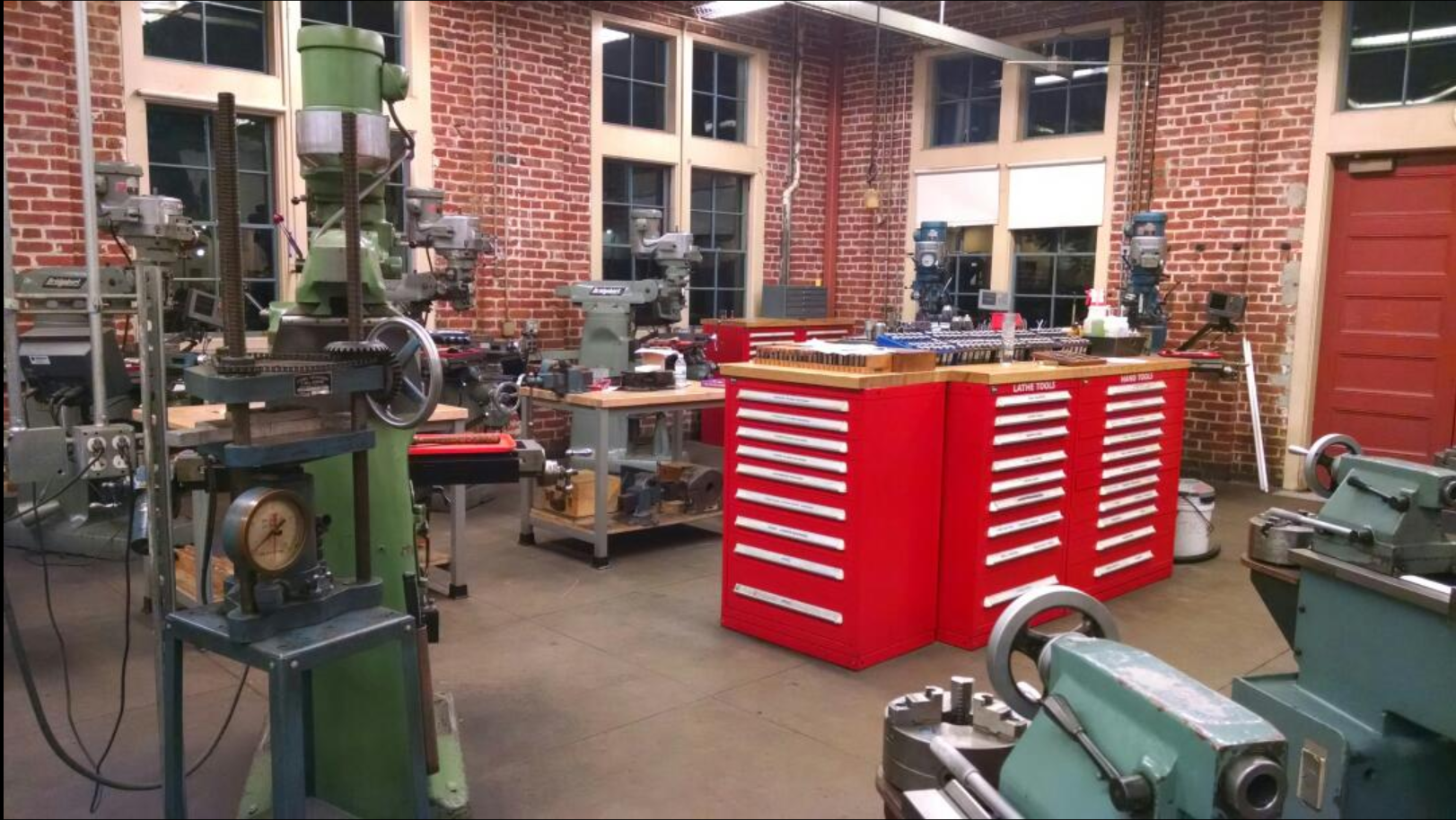
The Product Realization Lab (PRL) is a building on campus with tools and machinery where students have the opportunity to, well, realize a product. Various engineering classes require access to this lab, but any student can purchase a pass for access. Since watching Shark Tank I have wondered how people prototype products at home, say, in their garage. After seeing the PRL, I realized that contestants on Shark Tank probably had a machine or two to help them. Luckily the PRL is a space for students to bring their product ideas to fruition. The presence of this opportunity on campus is wonderful. A big step in the process of creating something is moving from the ideation phase to the realization phase. Sometimes, part of that is simply getting out of your own head and deciding to put pen to paper, or brush to canvas, or lathe to wood. The PRL is a space where you can “just do it!” We are fortunate that Stanford gives us the tools to overcome that gap in production.
As an artist, I know too well the struggle of having an idea, but being scared to start making it a reality. I think that hesitation comes from a fear of failure. The nice thing about product design is, you can prototype your idea. Version 1 of the product might have some issues, but still conveys what the product is made to accomplish. From there, it’s (theoretically) easier to tweak the product and make adjustments for version 2, which (theoretically) can be made quicker because most of the bumps in the road have been conquered with version 1.

Nylah Byrd
Nylah Byrd is an archaeology major with minors in chemistry and art practice in the Class of 2018 at Stanford University. She plans on pursuing a degree in museum conservation after graduation.
